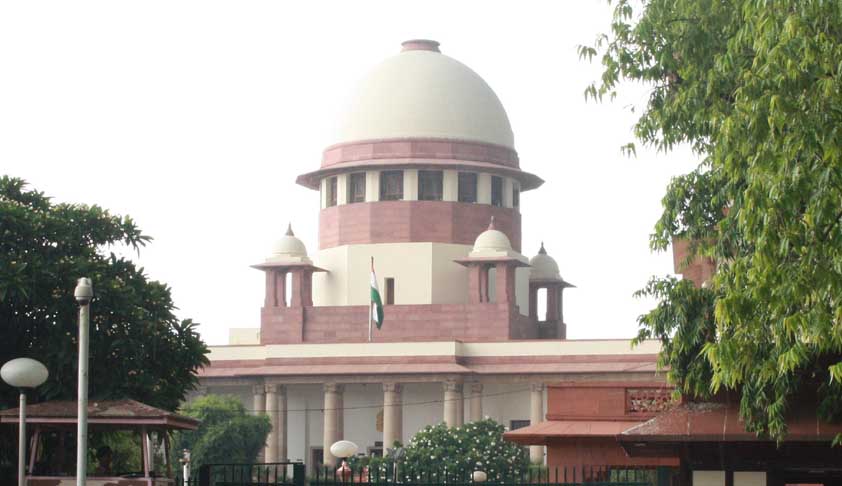- Home
- /
- News Updates
- /
- Supreme Court issues notice to...
Supreme Court issues notice to Centre, asking to frame guidelines to regulate TV content
LIVELAW NEWS NETWORK
30 Nov 2013 11:41 AM GMT
A Supreme Court bench of Chief Justice P. Sathasivam and Justice Ranjan Gogoi issued notices to ministries of Information and Broadcasting, Law and Justice and Communications & Information Technology, asking the three central ministries and others including Press Council of India (PCI) to reply to a PIL filed by Hindu Janjagruti Samiti, a registered public charitable trust, through...
A Supreme Court bench of Chief Justice P. Sathasivam and Justice Ranjan Gogoi issued notices to ministries of Information and Broadcasting, Law and Justice and Communications & Information Technology, asking the three central ministries and others including Press Council of India (PCI) to reply to a PIL filed by Hindu Janjagruti Samiti, a registered public charitable trust, through its Mumbai-based lawyer Rajeev K. Panday, which sought framing of guidelines to regulate contents of television channels. The apex court bench has also asked PCI, Election Commission, News Broadcasters Association, Indian Broadcasting Foundation and Advertising Standards Council of India to respond to the PIL.
The present petition was filed considering the complete absence of any regulatory authority for the TV Channels when the penetration of private TV channels and their mushrooming growth in the recent past has brought in a situation where a regulatory authority is not only desirable but also imperative as well so as to have a regulation and check on the contents of the programme, advertisement and news telecast by such private channel operators. The legal issues which were raised in the petition are that only authorized officers defined in Section 2 (a) of the Cable Television Networks (Regulation) Act, 1995 alone can file criminal complaints as per Section 18 of the Cable Television Networks (Regulation) Act, 1995, for programmes that are in violation of Programme Code under Rule 6 of Cable Television Networks Regulation Act, 1995. However, the powers of these officers to file criminal complaint have been virtually withdrawn by a circular dated 19.2.2008 issued by the Ministry of Information and Broadcasting. Also, Section 20 of Cable Television Networks Regulation Act, 1995 empowers the Central Government, inter alia, to regulate or restrict by order transmission or re-transmission of any channel or programme. However there is no seriousness from Central Government to invoke these powers to revoke or suspend license of channels that violate the programme code. There have been instances where the punitive action of suspending license only for a day was taken and that too after lapse of more than a year.
Alleging that there is complete absence of regulatory authority for TV Channels, the plea asked the court that it should declare that a 2008 government order will not prevent an authorized officer under the Cable Television Networks (Regulation) Act from initiating criminal prosecution against a channel in case of violation of provisions of the Act. Mr. Panday said that a significant question has been raised through this PIL which is of immense of public importance and public interest and relates to the necessity of an effective regulation of electronic media in matters involving public morality, public decorum, social tranquility and public order.
According to the PIL there is an absence of a regulatory body for TV channels which is comparable with Press Council of India that regulates the print media. Despite of the fact that TV channels are audio-visual media, there is an absence of censorship on TV contents. It also asked that how can a film that cannot be released without censor certificate can straightaway be released on a TV channel. It also states that the so-called self-regulation by electronic media serves no purpose as the self-regulating bodies are private companies which are controlled by the media houses. It further added that with a limited power of imposing fine up to Rs one lakh, the money goes in to the kitty of these private bodies itself and also the victim of media abuse is not compensated. The petition also stated that the government has no control over these bodies and these bodies are not accountable to people as they are not organs of the state.
The petition stated that there is a vast difference between the law relating to emergency blocking of objectionable website without prior notice as contained in the Information Technology (Procedure and Safeguards for blocking for access of information by public) Rules, 2009 as it is much more rigorous compared to TV channels for which there is no law for emergency blocking. Thus, in the absence of any rigorous law to control objectionable content of a TV channel, objectionable programme on TV channel can do more harm than an objectionable website. It stressed on the fact that the Centre has a very casual and non-serious attitude towards this issue, considering the belated action on behalf of the Government authorities against erring channels.
The petition stated that the reason for the rise in malpractices such as 'Paid News' "Extortion by blackmail", "Character Assassination for TRP" and such other practices is mainly due to the Central Government’s casual attitude towards exercising its powers with reference to controlling channels by suspension and revocation of license which has encouraged the channels to violate the programme code in a strident manner.


